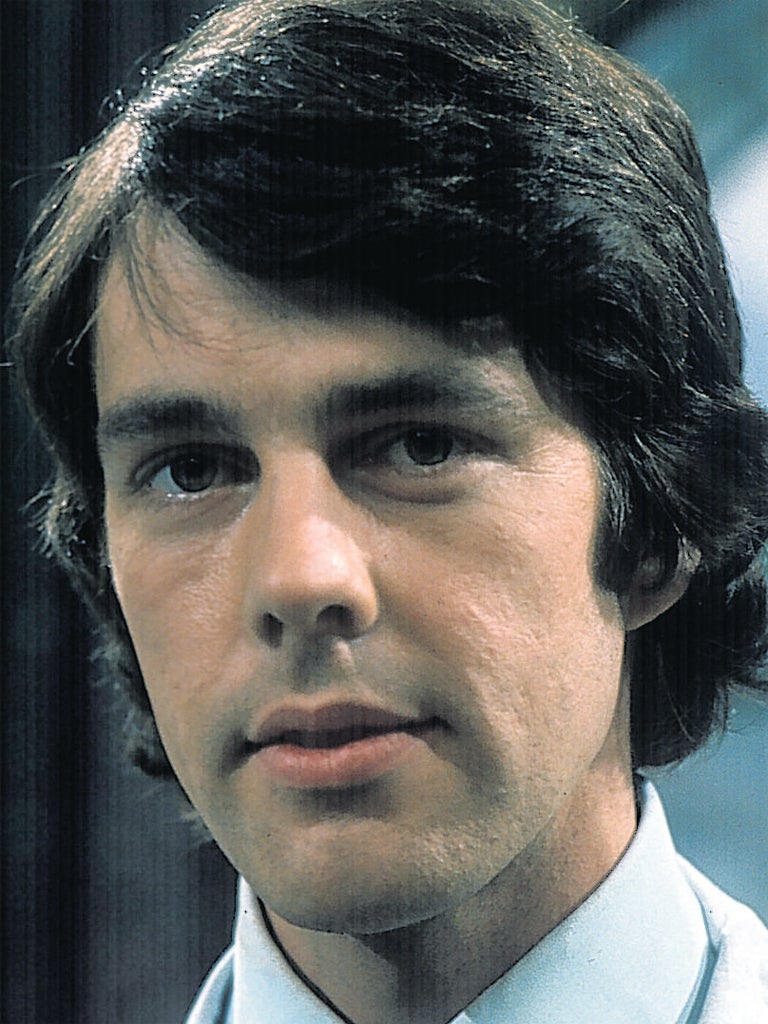Richard Morant: Actor best known as Flashman, and as Dr Enys in 'Poldark'

Your support helps us to tell the story
From reproductive rights to climate change to Big Tech, The Independent is on the ground when the story is developing. Whether it's investigating the financials of Elon Musk's pro-Trump PAC or producing our latest documentary, 'The A Word', which shines a light on the American women fighting for reproductive rights, we know how important it is to parse out the facts from the messaging.
At such a critical moment in US history, we need reporters on the ground. Your donation allows us to keep sending journalists to speak to both sides of the story.
The Independent is trusted by Americans across the entire political spectrum. And unlike many other quality news outlets, we choose not to lock Americans out of our reporting and analysis with paywalls. We believe quality journalism should be available to everyone, paid for by those who can afford it.
Your support makes all the difference.The actor Richard Morant was a darkly handsome presence on British television and stage. His portrayal of the archetypal bully Flashman in the 1971 BBC adaptation of Tom Brown's Schooldays terrified a generation of British children and remains the benchmark performance of the role to this day.
He also captured many a viewer's heart in the costume drama Poldark (adapted from Winston Graham's novel) as the irresistible and kind Dr Dwight Enys. From 1975 onwards, alongside his career as an actor, he ran his own Notting Hill gallery where he sold central Asian carpets and textiles.
Richard Morant was one of fivechildren born to the Shakespearean actor Philip Morant and his wife Pearl Travers in the village of Tredington, Warwickshire. Richard had an exceptional treble voice and sang solos in the church choir. Along with two of hissisters, and his first cousin, Penelope Wilton, he was naturally drawn toacting and went to study at the Central School of Speech and Drama inLondon, where he shared a housein Camden with fellow studentsDavid Dundas, Bruce Robinson and Michael Feast.
The ménage is recalled by his sister Angie as being permanently on the edge of chaos, but with its own shambolic style and frequent riotous parties with surprisingly good food. When Robinson went on to write the script of Withnail and I a decade or so later, he drew on these days for material.
Morant joined the Prospect theatre soon after graduating and toured in company with Ian McKellen, appearing in Shakespeare's Richard II, Edward II and Twelfth Night. More stage work followed, as well as the roles inTom Brown's Schooldays, and Poldark (1975-76). In 1974, having seen hisFlashman, Ken Russell had cast Morant as acomposite character called Max, scornful and mischievous, representing Alma Mahler's lovers in the fantastical biopic Mahler.
During the next decade Morant played characters as varied as Robespierre, opposite Anthony Andrews's Scarlet Pimpernel (1982), Brian Epstein in a TV drama called John and Yoko (1985) and the bridegroom in Neil Jordan's The Company of Wolves (1985). His career slowed down during the late 1980s but his mellifluous voice was in demand for voice-overs and radio, and three months ago he recorded the audio book of Julian Barnes' Booker prize-winner The Sense of an Ending.
Alongside his acting Morant had a parallel career as a dealer in carpets and textiles. He set up the Richard Morant Gallery in 1975, taking over the premises from his business partner David Black, a major figure in the world of central Asian textiles. The gallery was well stocked with 19th and early 20th century material, but Morant took most pride in the contemporary pieces, often of his own design, hand-loomed to order in rural Turkey using organic dyes, with either traditional patterns or adaptations of textiles from elsewhere.
There were William Morris-style knotted carpets and kilims based on early Peruvian weavings. The traditional communities who made these textiles inspired Richard with their values and respect for nature and the sacred. He would return home from visiting his weavers invigorated and optimistic. On the Dalai Lama's most recent tour of this country, he addressed an audience seated on a rug designed by Richard.
After a long spiritual journey Richard found what he had been searching for and gained an acceptance of life's impermanence. Buddhist thought and philosophy enriched his very existence and visitors to the gallery sometimes spotted a discreet shrine in a corner near his desk. He was able to communicate some of his inner calm to those close to him when they were in need and had a gentle gift for friendship, managing to be gregarious without being formally social. Classical music was something of a passion, as was literature, and, surprisingly, he devoured modern thrillers.
Although profound and ascetic, he had an earthy side with a delightful laugh that came easily. Recently, I told him how bad I had found the last episodes of Downton Abbey. Richard replied, laughing heartily, that yes, it was awful, and what was more awful was that he wasn't in it. He will be greatly missed.
Richard Morant, actor and gallerist: born Shipston on Stour, Warwickshire 30 October 1945; married 1969 Melissa Fairbanks (one son, one daughter; marriage dissolved 1979), 1982 Valerie Buchanan (one son, one daughter); died Richmond, Surrey 9 November 2011.
Join our commenting forum
Join thought-provoking conversations, follow other Independent readers and see their replies
Comments